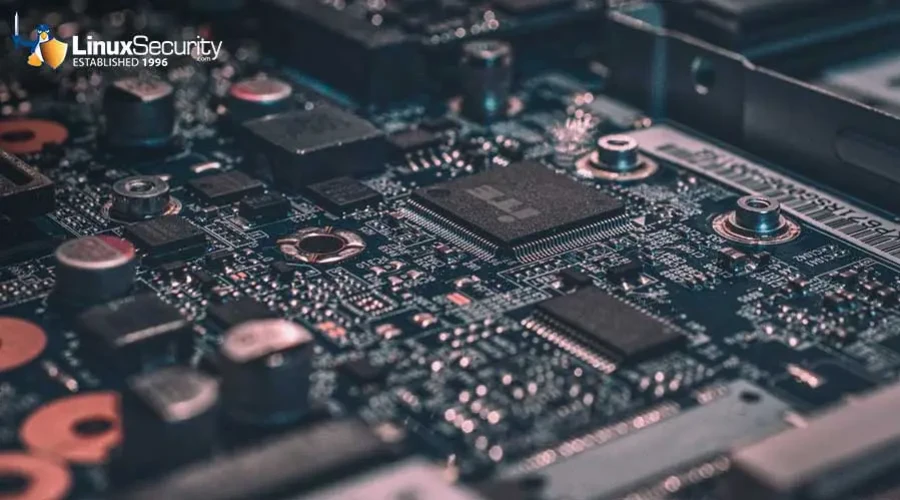Securing Your Linux Boot Process: An Insider's Guide to Secure Boot

Boot security has become an increasingly important topic in recent years as threats against system integrity continue to evolve. Secure Boot is a security standard developed to provide protection against such threats by validating the integrity of boot software. With Secure Boot, security is enforceable during the boot process rather than relying solely on the operating system. This helps prevent malicious software from embedding itself early in the boot process, providing an additional layer of defense against low-level attacks.
As computing environments become more complex, Secure Boot offers a proactive safeguard to strengthen system security from the ground up. Its approach aligns with the security principle of defense in depth by adding protective measures at multiple levels. For admins, infosec professionals, and others responsible for system security, understanding the mechanisms behind Secure Boot is key to evaluating its tradeoffs and effectiveness in practice. This article will provide a technical overview of Secure Boot's work and its implications for Linux-based systems.
What is Secure Boot?
Secure Boot is a security standard developed by members of the PC industry to help make sure that a device boots using only software that is trusted by the Original Equipment Manufacturer (OEM). It is part of the Unified Extensible Firmware Interface (UEFI) boot process.
When enabled, Secure Boot ensures that an accepted digital certificate signs each piece of boot software. If any unauthorized change is detected during the boot process, Secure Boot will not allow the machine to finish booting. This prevents malicious software from modifying the bootloader or kernel and helps ensure that only trusted software approved by the OEM loads at boot time.
The goal of Secure Boot is to protect the integrity of the boot process by preventing unsigned or unauthorized code from running before the operating system loads. It aims to harden device security and mitigate certain common attacks like rootkits or bootkits that can be difficult to detect and remove if they are able to run during the machine's boot-up sequence. Overall, Secure Boot aims to make exploitation more difficult for attackers by restricting what can run before the OS is initialized.
How Secure Boot Works
 Secure Boot utilizes the Unified Extensible Firmware Interface (UEFI) to check the digital signatures of operating system loaders before launching them. This verification process prevents unauthorized or modified operating systems from running.
Secure Boot utilizes the Unified Extensible Firmware Interface (UEFI) to check the digital signatures of operating system loaders before launching them. This verification process prevents unauthorized or modified operating systems from running.
The Secure Boot process involves a hierarchy of cryptographic keys embedded in the system firmware. Microsoft requires all Windows 8-certified devices to ship with Microsoft keys pre-installed. There are several key types:
- Platform Keys (PK) - Root keys that represent the system/device manufacturer. Used to verify Key Exchange Keys.
- Key Exchange Keys (KEK) - Keys used to verify bootloaders and OS kernels. Signed by Platform Keys.
- Signature Database (DB) - Authorized signing keys stored in firmware. Used to authenticate boot binaries.
- Forbidden Signature Database (DBX) - Keys of unauthorized or revoked binaries that failed validation.
When booting, the firmware checks the signature of the bootloader against its built-in keys in DB/DBX. If verified, it executes the bootloader, which then checks the OS kernel. This repeats for any layered binaries in the boot process. Keys and signatures form a Chain of Trust that confirms legitimacy.
Benefits of Secure Boot
Secure Boot aims to prevent boot malware and rootkits by only allowing verified bootloaders and OS kernels to load during the boot process. This protects the integrity of the boot process by blocking malicious software from modifying bootloaders or kernels.
Some key benefits of Secure Boot include:
-
Prevents bootkit attacks: Since only digitally signed bootloaders and kernels can execute, Secure Boot blocks bootkits and rootkits from infecting the boot process. This prevents attackers from gaining persistence on the machine.
-
Built-in malware protection: By restricting unauthorized code execution during boot, Secure Boot is an effective first line of defense against malware seeking to establish footholds through boot persistence.
-
Alerts users of tampering: If a malicious actor tampers with the boot process, Secure Boot will prevent startup and alert the user that unauthorized changes have occurred. This makes it harder for attackers to hide malicious code in boot components.
-
Protects recovery partitions: Secure Boot requires that recovery partitions also have properly signed bootloaders, protecting these partitions from tampering.
-
Facilitates trusted boot: Secure Boot verifies the integrity of each step in the boot process, enabling trusted boot. This ensures no rootkits or malware have compromised any part of the startup sequence.
By leveraging cryptographic verification of boot components, Secure Boot makes it much harder for attackers to compromise systems at the earliest stages of operation. For security-conscious users, this safeguard against advanced boot attacks is a major benefit.
Drawbacks of Secure Boot
While Secure Boot offers increased security, it also comes with some notable drawbacks.
First and foremost, Secure Boot can cause compatibility issues. Since Secure Boot restricts what can run on a device, operating systems or bootloaders that are not signed with an approved key will fail to start up when Secure Boot is enabled. This particularly impacts Linux distributions - many may not boot properly unless steps are taken to sign the bootloader with a trusted key. While solutions exist, such as adding your own keys or disabling Secure Boot entirely, it represents an extra complication that would not otherwise exist.
Secure Boot also impacts user freedom and control over devices. With Secure Boot active, users cannot easily install alternate operating systems or modify critical boot components. Everything has to be cryptographically signed with a key authorized by the hardware vendor. This gives hardware vendors more control over what can run on a device, reducing the level of user freedom. While power users can work around Secure Boot, it does make tinkering and modifications more difficult.
So, in summary, the two major drawbacks are compatibility problems with unsigned operating systems like Linux and a reduction in user freedom due to restrictions enforced by Secure Boot. While Secure Boot heightens security, it can come at the cost of convenience, flexibility, and control.
Secure Boot in Linux
 Most modern Linux distributions support Secure Boot without the need to disable it. This is accomplished by using a "Shim" bootloader, which acts as an intermediary between the UEFI firmware and the OS bootloader like GRUB.
Most modern Linux distributions support Secure Boot without the need to disable it. This is accomplished by using a "Shim" bootloader, which acts as an intermediary between the UEFI firmware and the OS bootloader like GRUB.
The Shim bootloader is signed by Microsoft so that it can boot on systems with Secure Boot enabled. It then verifies the signature of the Linux kernel and initrd image before booting into the Linux OS. This allows Linux distributions to work seamlessly with Secure Boot without requiring any modifications.
In order to have its bootloader and kernel recognized by Shim, each Linux distro generates its own keys and includes them in its boot files. During installation, the distro adds its keys to the UEFI key database in a process called "enrollment." This allows the boot chain to be properly verified at each stage by Shim and UEFI.
The enrollment keys are cryptographic certificates that establish a chain of trust from the distro's keys to Microsoft's keys to the OEM's keys baked into the hardware. As long as all the keys check out, the system will successfully boot.
Overall, Shim, combined with proper key management, allows modern Linux distros to function on Secure Boot-enabled devices without users needing to disable this important security feature. This makes it much easier to run Linux on most PCs today safely.
Disabling Secure Boot
Secure Boot is enabled by default in Windows 11 and most modern computers. Some Linux users may wish to disable Secure Boot for greater control and customization of their systems. However, there are risks in doing so.
Disabling Secure Boot opens up the computer to potential bootloader attacks or malware. With Secure Boot off, an attacker could install a malicious bootloader and gain control of the system on boot up. For most users, the added security of Secure Boot likely outweighs the need for customization.
However, power Linux users may still wish to disable Secure Boot to allow the installation of custom kernels, bootloaders, or drivers that are not part of the default Secure Boot key database. Advanced Linux users can take steps to secure their system through other means if they choose to disable Secure Boot.
In general, Secure Boot only needs disabled if you want to boot an operating system or drivers that are not signed with keys already trusted by your firmware. The average user likely does not need to disable it. But Linux enthusiasts who want more control over their system may choose to take other precautions to lock down their boot process.
Looking Ahead
Secure Boot and technologies like TPMs (Trusted Platform Modules) are likely to continue advancing and playing pivotal roles in computer security. As threats evolve, secure boot implementations will need to keep pace. Microsoft and other vendors may continue refining their secure boot policies. Wider TPM adoption could provide hardware-based security enhancements like full-disk encryption and virtualization-based security. However, this trajectory also raises concerns about user freedom and control. The FOSS community may push back against restrictions while seeking open alternatives. Overall, technologies like secure boot aim to harden security, but feedback loops with users and developers will shape their future. Balancing security, usability, and openness remains an ongoing challenge.
Final Thoughts on the Significance of Secure Boot
Secure Boot offers valuable protection against firmware attacks and rootkits in order to keep systems secure. However, it also introduces new challenges. Overall, Secure Boot aims to improve security but requires some thoughtful configuration, especially for Linux users who wish to retain control over their systems. With the right keys and signatures, Secure Boot can help block malware while still enabling users to run their preferred OS and software. While adjustments are still needed, Secure Boot represents an important step towards more trusted systems and supply chains. Looking ahead, solutions that combine security and flexibility will be key in the ongoing quest to balance protection and user freedom.
Key takeaways from this article include:
- Despite previous concerns, secure boot works well with Linux distributions and is disabled by default on pre-installed Linux laptops. Secure boot does not prevent installation of other operating systems.
- Secure boot aims to block malware trying to modify the boot process. The tradeoff is reduced flexibility in controlling your boot process.
- Microsoft requires secure boot enabled for Windows 11 certification. This improves security but reduces user control.
- Most Linux distributions work with secure boot enabled after adding their keys. Some, like Gentoo, still face challenges.
- Secure boot validates bootloaders and kernels via cryptographic keys. Red Hat, Canonical, Microsoft, and others have their keys preloaded.
- Users can enroll their own keys and certificates to sign bootloaders and kernels for full control. This requires disabling secure boot first.
- Threat actors still find ways to bypass secure boot protections in sophisticated attacks. No security solution is perfect.
Stay safe out there, fellow Linux users! Be sure to subscribe to our free weekly newsletters for the latest information, insights, and advisories impacting the security of your systems.






![Linux Kernel 'Make-Me-Root' Flaw Threatens Popular Distros [Updated] 32.Lock Code Circular Esm W300](/images/articles/900x500/32.Lock_Code_Circular.jpg#joomlaImage://local-images/articles/900x500/32.Lock_Code_Circular-esm-w300.jpg?width=900&height=500)
















